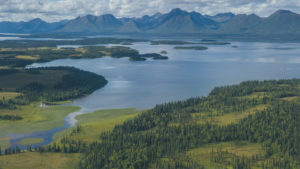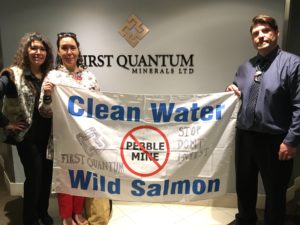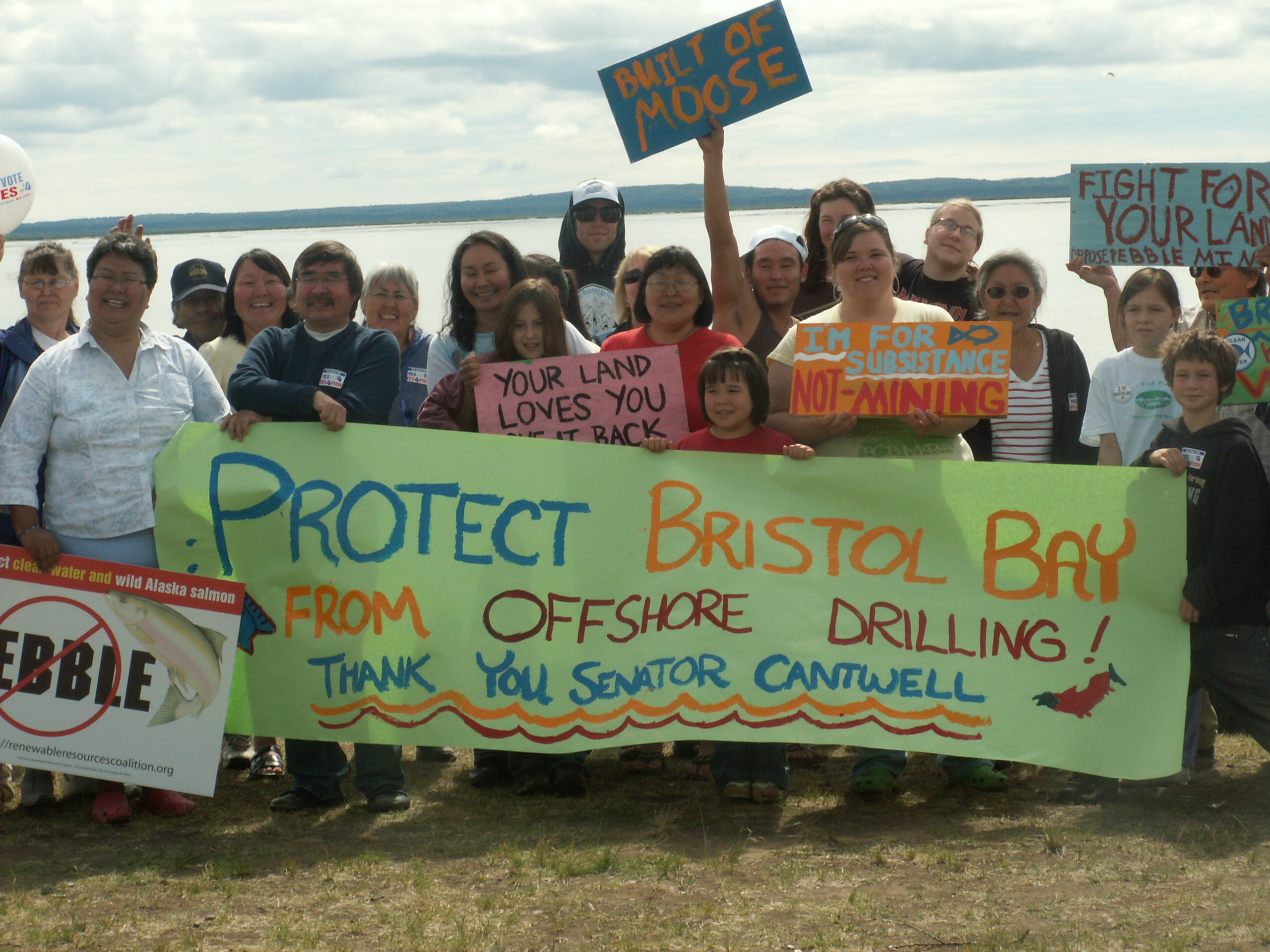
The United States Environmental Protection Agency, moving to end a fifteen year battle, is maneuvering to block a giant, square mile-sized open pit copper and gold mine proposed in two watersheds that are spawning grounds for salmon runs of Alaska’s Bristol Bay.
“Bristol Bay supports one of the world’s most important salmon fisheries: Two decades of scientific study show us that mining the Pebble Deposit would cause permanent damage to an ecosystem that supports a renewable economic powerhouse and has sustained fishing cultures since time immemorial,” the EPA’s new Region 10 administrator (and former Seattle mayoral candidate) Casey Sixkiller said in a statement.
Although a court challenge is expected, the EPA’s action – taken under section 404(c) of the Clean Water Act – may drive a spike through the heart of the project. It would also end an epic battle that pitted one resource that drives Alaska’s economy against another. The U.S. Army Corps of Engineers has already denied a permit to the proposed mine, which backers want to build in Southwest Alaska between Katmai and Lake Clark National Parks.
The EPA’s action represents a win for the tenacity of Senator Maria Cantwell, D‑Washington, who began fighting the Pebble Mine project in 2011 and pushed the federal agency into a three-year study of the project’s impacts.
The EPA found that the mine would impact anywhere from twenty-four up to ninety-four miles of waterways and endanger forty-eight to sixty-two miles of river should its retention of toxic tailings be released. An estimated 2,800 acres of wetlands would be damaged or destroyed. The region is an earthquake zone.
“The science is clear: Pebble Mine would poison the fragile Bristol Bay watershed, destroying millions of salmon and the thousands of jobs that rely on them,” Cantwell said in a statement last week, applauding the EPA’s action.

Allowing for political hyperbole, Cantwell was on the mark flagging the project. The proposed mine would be 2,000 feet deep, require construction of an eighty-two-mile service road through wetlands as well as a 165-mile natural gas pipeline. It would require construction of a 270-megawatt power plant, and a port in Iliamna Bay.
Using figures from 2019, the EPA valued the annual Bristol Bay salmon fishery at $2.2 billion, the vast majority being a commercial and native salmon fishery that supports 15,000 jobs and is valued at $2 billion. It generates nearly $1 billion worth of economic activity in Alaska, but also supports about 1,000 licenses of fishers who travel north from Washington.
The project has been championed by a Canadian firm, but Northern Dynasty Minerals has increasingly lacked for company.
A quartet of major mining firms – Anglo-American, Mitsubishi, Rio Tinto and First Quantum Minerals – have withdrawn from the Pebble project in recent years.
The Pebble Deposit is “of rare magnitude and quality,” said Anglo-American, which nonetheless pulled out after judging investment and risk as too high.
In 2020, Morgan Stanley dumped its shares in Northern Dynasty.
The proposed Alaska megaproject has generated a multifaceted opposition during the past decade.
- Five leading retail jewelers, including Ben Bridge and Tiffany,gave the project thumbs down and said they would not fashion jewelry out of gold taken from the mine. “For Tiffany & Co., and we believe many of our fellow retail jewelers, this means we will look to other places to source gold,” said Michael Kowalski, Tiffany’s CEO.
- Leading chefs decried the Pebble Project for its potential damage to wild salmon runs. A “Stop Pebble Mine” message was projected on the wall of Seattle’s Palace Kitchen. “We have &@#$ed up every commercial fishery that we’ve had down here in the states. All forty-eight states, so this is the last frontier and this is the last one available,” in the words of Seattle celebrity chef Tom Douglas.
- An outfit called the Environmental Investigation Agency, posing as Hong Kong investors, got Pebble Partnership executives to boast of their influence with Alaska politicians. CEO Tom Collier said U.S. Senators Lisa Murkowski and Dan Sullivan might sound critical but were ready to go along with the mine. Murkowski might make hostile noises, said Collier, but “when it comes time to do something, she never does anything to hurt Pebble. Never.” Exit Tom Collier. Both Alaska senators denied backstage support for the mine and subsequently found serious flaws in Pebble’s permit application.
- The Trump regime pulled back on plans to use the Clean Water Act and appeared for a time leaning toward Army Corps permitting of the project. It turned out, however, that presidential sons Donald Jr. and Eric Trump are patrons of luxury sport fishing lodges in the region. Curiously, nativist FNC pundit Tucker Carlson also denounced the project.
The last line of advocacy, for Pebble Mine developers, is that copper from the mine would aid in construction of turbines, solar panels and electric vehicles, all components in the Biden administration’s campaign to curb global warming. It has, however, not been listed as a critical mineral by the federal government.
The EPA’s determination of impacts under the Clean Water Act would prohibit any entity from dumping mine related waste within a 308-square mile region around the site of the proposed mine.
During the 2020 campaign for the White House, President Biden pledged to “listen to the scientists and protect Bristol Bay… It is no place for a mine.”
The EPA will accept public comments until July 5th, and expects to publish a final legal determination later this year.


Thanks for the great news!